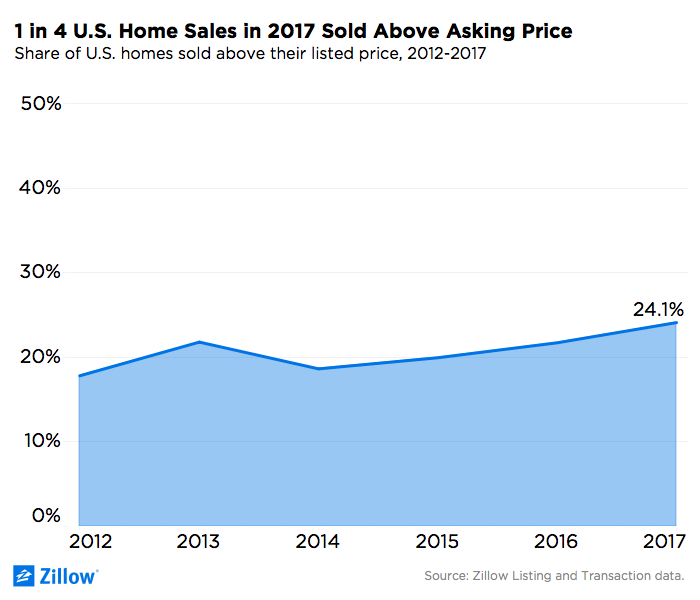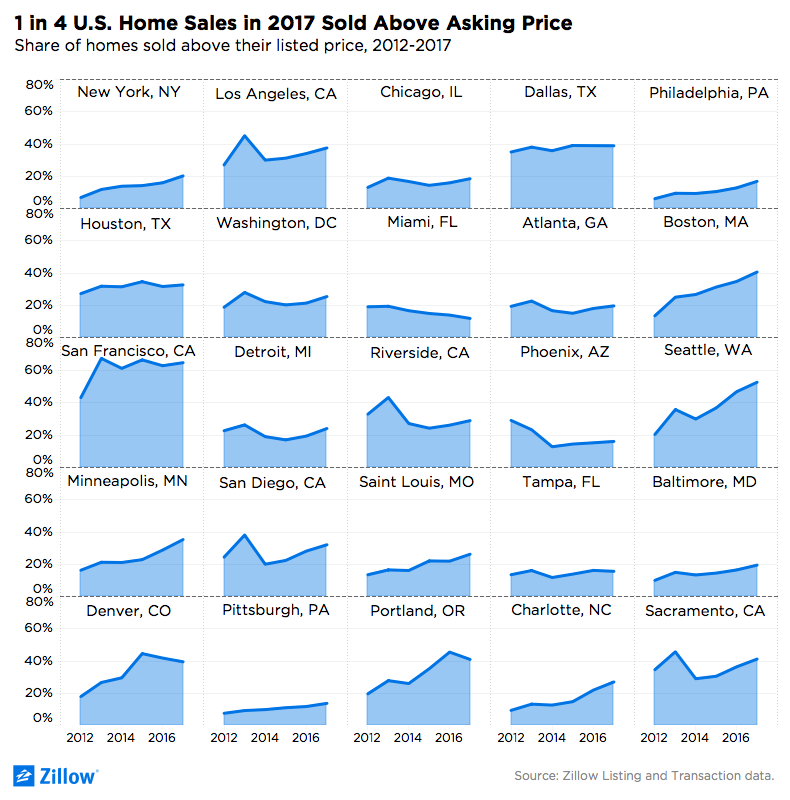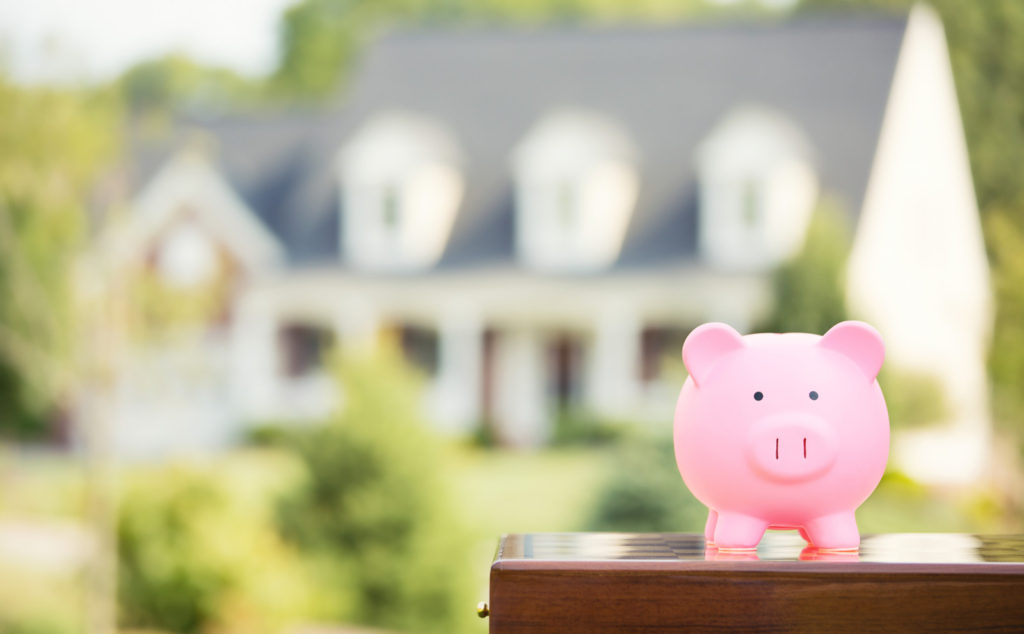For a Quarter More: Why 1 in 4 U.S. Home Sales in 2017 Sold Above List Price
Roughly a quarter of U.S. home sellers got more from their home than they asked for last year – in some cases, much, much more. Nationwide, buyers paid more than the asking price on 24.1 percent of home sales in 2017, netting sellers an additional $7,000 on average over their initial offering price.
- The share of U.S. home sales that were above the listed price increased from 17.8 percent in 2012 to 24.1 percent in 2017.
- The typical price increase for homes that sold above the listed price was 3.1 percent.
- More than half of home sales in San Jose, San Francisco, Salt Lake City and Seattle went for more than the listed prices.
Roughly a quarter of U.S. home sellers got more from their home than they asked for last year – in some cases, much, much more.
Nationwide, buyers paid more than the list price on 24.1 percent of home sales in 2017, netting sellers an additional $7,000 on average over their initial offering price. The share of homes selling above list price has grown considerably since the beginning of the housing recovery in 2012, when slightly more than one in six home sales (17.8 percent) closed above asking price. And as the market has continued to recover, the share of above-ask sales has risen in each of the past three years compared to the year prior.

A combination of factors is contributing to sellers’ windfalls, including limited supply and high demand, demographic shifts, a strong economy and favorable financing conditions. A worsening shortage of homes actually available to buy, especially at the entry level, hasn’t dampened demand from buyers themselves, particularly from younger, first-time buyers that are growing up and looking to transition away from renting as they move up the career ladder and start families. Additionally, low mortgage interest rates have buoyed buyers’ budgets, raising the limits on what they can afford and may be willing to pay.
In a handful of markets, selling above list in 2017 was more common than not – more than half of sellers in San Jose (68.5 percent), San Francisco (64.5 percent), Salt Lake City (55.4 percent), Seattle (52.4 percent) and Provo, Utah (51.1 percent), sold their homes for more than they asked. In these markets, where the lucrative tech market is booming and the quality of life is excellent, extra-profitable sales are the rule and not the exception.
And profitable they are – in each of those five markets, sellers pocketed at least an additional $20,000 over their initial asking price, on average. The average home sold above list in San Jose netted sellers an additional $62,000, the largest difference between list and sale price of the 100 metros analyzed by Zillow.

The housing market in general is very competitive, further putting sellers in the drivers’ seat. High competition among buyers means homes sell quickly, with the typical U.S. home selling in 80 days (including the time it takes to close on the sale after an offer is accepted). In San Jose, San Francisco and Seattle, the average home sells in less than 50 days. Fierce competition means buyers may not win a home on their first bid, and instead need to come back with increasingly sweet offers. The typical buyer spends more than four months home shopping and has to make multiple offers before an offer is accepted, according to the 2017 Zillow Group Consumer Housing Trends Report.
But despite the widespread competition and increasing willingness to pay-to-play on the part of buyers, the old rules – in which an asking price was generally seen as a starting point at which to negotiate a price down, and not up – do still apply in a majority of areas. While a quarter of U.S. homes sold last year did ultimately fetch more than was asked, almost two-thirds (65.9 percent) sold for below their asking price (another 10 percent sold for exactly what they were listed for). Among those U.S. homes sold in 2017 for less than what was asked, the average discount was 6.2 percent, or $14,800 less than listed.
Markets in which the smallest share of sales fetched above-list prices include Bradenton and Fort Myers, Florida (9.2 percent and 9.6 percent, respectively, of 2017 sales sold above list price); Little Rock, Arkansas (9.9 percent); Scranton, Pennsylvania (11.5 percent); and Youngstown, Ohio (11.8 percent).


